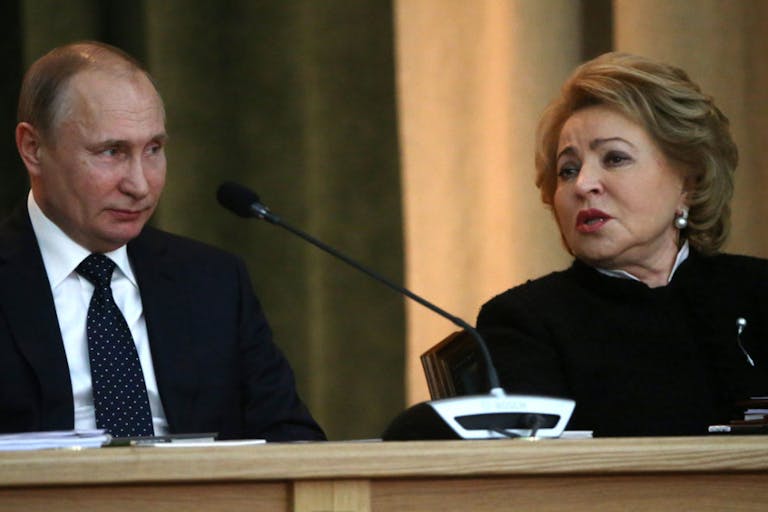
Court grants baby Chance's father sole custody
Nancy Flanders
·
International·By Bettina di Fiore
Russia continues attempts to improve country’s low fertility rate
In response to the nation’s steadily declining fertility rate and what experts have described as a looming “demographic winter,” Russian officials have created a sort of “demographic special forces unit,” according to the Moscow Times.
Russian officials say this “special forces unit” means that every governmental department has an official who is focused on the country’s demography.
The Russian fertility rate stands at 1.4; population replacement level is 2.1.
Though national demography improvement efforts were put in place in 2018, there has been no improvement in the fertility rate.
Though efforts have been made to reduce Russia’s exceedingly high abortion rate, currently, 27% of the babies conceived in the country are aborted.
Chairman of the Federation Council Valentina Matvienko made reference to a sort of “special forces unit” that deals with demography, stating that in every governmental department there are officials in place who are prioritizing the government’s increasing focus on “family-centricity” and growth.
Matvienko said, “The main thing is that by joint efforts we managed to make family-centricity a general state affair. Today in any department you will be given the name of the deputy minister who deals with demography. Such a demographic special forces have been created. We can hope that we will return our traditional values.”
Russia’s total fertility rate — the estimated average number of children born to each woman — currently stands at 1.4. In order for any population to replace itself and maintain its size, the fertility rate must be 2.1. Lower numbers indicate an aging and shrinking population.
Experts warn that falling birth rates will likely lead to a litany of socioeconomic problems, including a decline in prosperity, culture, and innovation. Attempting to avert this crisis, many nations have implemented policies designed to encourage family growth.
In 2018, President Vladimir Putin announced the formation of the National Demography Project, with the stated goal of stopping the nation’s population decline within six years. Seven years later, the Russian fertility rate remains unchanged.
Article continues below
Dear Reader,
In 2026, Live Action is heading straight where the battle is fiercest: college campuses.
We have a bold initiative to establish 100 Live Action campus chapters within the next year, and your partnership will make it a success!
Your support today will help train and equip young leaders, bring Live Action’s educational content into academic environments, host on-campus events and debates, and empower students to challenge the pro-abortion status quo with truth and compassion.
Invest in pro-life grassroots outreach and cultural formation with your DOUBLED year-end gift!
Among other recent efforts to increase average family size, Russia has introduced measures to deter women from obtaining abortions. Putin has specifically identified reducing the abortion rate as a key strategy to combat Russia’s population decline.
Historically, Russia has had exceptionally high abortion rates. For half a century, more Russian children were aborted than were born; abortions outnumbered live births every year from 1957 (the earliest year for which reliable data is available) through 2006.
Throughout much of the 1960s, Russian abortions totaled more than five million per year, while live births hovered around two million annually — in other words, well over twice as many children were killed by abortion than were allowed to be born.
Although the nation’s abortion statistics have declined significantly, recent data indicates that about 27% of the children conceived in Russia are still killed in the womb.
Russia is one of many developed nations, including the United States and almost all of Europe, that has had a total fertility rate well below replacement levels for several years. It is, like many other nations, attempting to address this through various policies.
Follow Live Action News on Facebook and Instagram for more pro-life news.
Live Action News is pro-life news and commentary from a pro-life perspective.
Contact editor@liveaction.org for questions, corrections, or if you are seeking permission to reprint any Live Action News content.
Guest Articles: To submit a guest article to Live Action News, email editor@liveaction.org with an attached Word document of 800-1000 words. Please also attach any photos relevant to your submission if applicable. If your submission is accepted for publication, you will be notified within three weeks. Guest articles are not compensated (see our Open License Agreement). Thank you for your interest in Live Action News!

Nancy Flanders
·
Politics
Stefano Gennarini, J.D. and Kelly Heilman, J.D.
·
Politics
Bridget Sielicki
·
Politics
Angeline Tan
·
Politics
Right to Life UK
·
International
Angeline Tan
·
Human Rights
Bettina di Fiore
·
Politics
Bettina di Fiore
·
Human Interest
Bettina di Fiore
·
Activism
Bettina di Fiore
·
Analysis
Bettina di Fiore
·